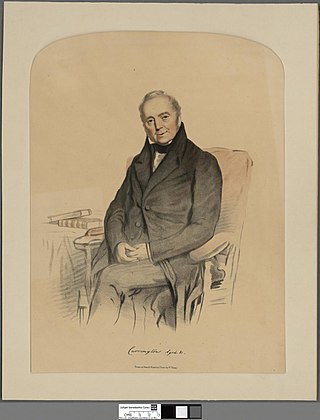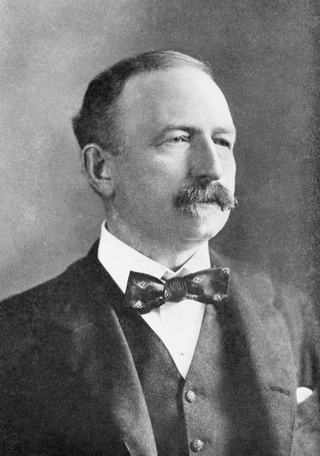
Earl Cairns is a title in the Peerage of the United Kingdom. It was created in 1878 for the prominent lawyer and Conservative politician Hugh Cairns, 1st Baron Cairns. He was Lord High Chancellor of Great Britain in 1868 and from 1874 to 1880. Cairns had already been created Baron Cairns, of Garmoyle in the County of Antrim, in 1867, and was made Viscount Garmoyle, in the County of Antrim, at the same time he was given the earldom. These titles are also in the Peerage of the United Kingdom.

Viscount Wimborne, of Canford Magna in the County of Dorset, is a title in the Peerage of the United Kingdom.

Baron Carrington is a title that has been created three times, once in the Peerage of England, once in the Peerage of Ireland and once in the Peerage of Great Britain.
Baron Ironside, of Archangel and of Ironside in the County of Aberdeen, is a title in the Peerage of the United Kingdom. It was created in 1941 for Field Marshal Sir Edmund Ironside, previously Governor of Gibraltar and Chief of the Imperial General Staff. As of 2020 the title is held by his grandson, the third Baron, who succeeded in that year. The second baron was Deputy Chairman of the House of Lords from 1974 to 1977. However, he lost his seat in parliament after the passing of the House of Lords Act 1999.
Baron Kindersley, of West Hoathly in the County of Sussex, is a title in the Peerage of the United Kingdom. It was created in 1941 for the businessman Sir Robert Kindersley, chiefly in recognition of his work as President of the National Savings Committee. His second son, the second Baron, was a Brigadier in the Scots Guards. As of 2017 the title is held by the latter's grandson, the 4th Baron, who succeeded his father in 2013.
Baron Wedgwood, of Barlaston in the County of Stafford, is a title in the Peerage of the United Kingdom. It was created in 1942 for the soldier and politician Josiah Wedgwood. He was the great-great-grandson of Josiah Wedgwood, the founder of the Wedgwood pottery dynasty. As of 2023, the title is held by the first Baron's great-grandson, the fifth Baron, who succeeded his cousin in 2014.

Baron Newall, of Clifton-upon-Dunsmoor in the County of Warwick, is a title in the Peerage of the United Kingdom. It was created on 18 July 1946 for Marshal of the Royal Air Force Sir Cyril Newall. He was Chief of the Air Staff between 1937 and 1940 and Governor-General of New Zealand between 1941 and 1946. As of 2017 the title is held by his only son, the second Baron, who succeeded in 1963.

Baron Shaughnessy, of the City of Montreal in the Dominion of Canada and of Ashford in the County of Limerick, is a title in the Peerage of the United Kingdom. It was created in 1916 for the Milwaukee born businessman Thomas Shaughnessy, president of the Canadian Pacific Railway Company. He was succeeded by his eldest son, the second Baron, a Director of the CPR and of the Canadian Bank of Commerce. His son, the third Baron, was a businessman and was also active in the House of Lords. However, he lost his hereditary seat in parliament after the House of Lords Act 1999.

Baron Parmoor, of Frieth in the County of Buckingham, is a title in the Peerage of the United Kingdom. It was created on 16 January 1914 for the lawyer and politician Sir Charles Cripps. He and his second wife, Marian Ellis, were anti-war activists. Two of his sons, the second and third Barons, both succeeded to the title. The third Baron was succeeded by his son, the fourth Baron. As of 2010, the title is held by the latter's first cousin, the fifth Baron, who succeeded in 2008. He is the grandson of Major the Hon. Leonard Harrison Cripps, the third son of the first Baron.

Baron Merthyr, of Senghenydd in the County of Glamorgan, is a title in the Peerage of the United Kingdom. It was created in 1911 for the Welsh coal mining magnate Sir William Lewis, 1st Baronet. He had already been created a baronet, of Nantgwyne in the County of Glamorgan, in 1896. The barony is named after the town of Merthyr Tydfil, where Lewis was born. Lord Merthyr's grandson, the third Baron, was Chairman of Committees in the House of Lords from 1957 to 1965 and a Deputy Speaker from 1957 to 1974. The latter was succeeded by his son, the fourth Baron. He disclaimed the peerage for life on 26 April 1977, three weeks after succeeding his father. He did not use his title of baronet either. He died on 5 August 2015.
Baron Milne, of Salonika and of Rubislaw in the County of Aberdeen, is a title in the Peerage of the United Kingdom. It was created on 26 January 1933 for Field Marshal Sir George Milne. He had previously served as Chief of the Imperial General Staff. As of 2009 the title is held by his grandson, the third Baron, who succeeded his father in 2005.

Baron Brassey of Apethorpe, of Apethorpe in the County of Northampton, is a title in the Peerage of the United Kingdom. It was created in 1938 for Sir Henry Brassey, 1st Baronet, who had previously represented Northamptonshire Northern and Peterborough in the House of Commons as a Conservative. He had already been created a Baronet, of Apethorpe in the County of Northampton, in 1922. Brassey was the second but eldest surviving son of Henry Brassey, third son of Thomas Brassey, and the nephew of Thomas Brassey, 1st Earl Brassey, and Albert Brassey. as of 2022 the titles are held by his great-grandson, the fourth Baron, who succeeded his father in 2015.

Baron Trevethin, of Blaengawney in the County of Monmouth, is a title in the Peerage of the United Kingdom. It was created in 1921 for the prominent judge Sir Alfred Lawrence, Lord Chief Justice of England from 1921 to 1922.

Baron Trevor is a title that has been created three times. It was created first in 1662 in the Peerage of Ireland along with the viscountcy of Dungannon. For information on this creation, which became extinct in 1706, see Viscount Dungannon.
Baron Clwyd, of Abergele in the County of Denbigh, is a title in the Peerage of the United Kingdom. It was created in 1919 for the Liberal politician Sir John Roberts, 1st Baronet, who had previously represented Denbighshire West in the House of Commons. He had already been created a Baronet, of Brynwenallt in the parish of Abergele in the County of Denbigh, in the Baronetage of the United Kingdom in 1908. Lord Clwyd's father John Roberts had earlier been Member of Parliament for Flint from 1878 to 1892. As of 2016 the titles are held by his great-grandson, the fourth Baron, who succeeded his father in 2006.
Baron Cadman, of Silverdale in the County of Stafford, is a title in the Peerage of the United Kingdom. It was created in 1937 for John Cadman, a mining engineer, petroleum technologist and public servant. As of 2017 the title is held by his grandson, the third Baron, who succeeded his father in 1966.

Baron Ritchie of Dundee, of Welders in the Parish of Chalfont St Giles in the County of Buckingham, is a title in the Peerage of the United Kingdom. It was created in 1905 for the Conservative politician Charles Ritchie. He was Home Secretary between 1900 and 1902 and Chancellor of the Exchequer between 1902 and 1903.

Josiah Charles Stamp, 1st Baron Stamp was an English industrialist, economist, civil servant, statistician, writer, and banker. He was a director of the Bank of England and chairman of the London, Midland and Scottish Railway.

Wilfred Carlyle Stamp, 2nd Baron Stamp, MA, ACA was a son of the British banker Josiah Stamp, 1st Baron Stamp. He holds the record for holding a peerage for the shortest length of time.
Trevor Charles Stamp, 3rd Baron Stamp MA MD FRCPath was a British medical doctor and bacteriologist.














